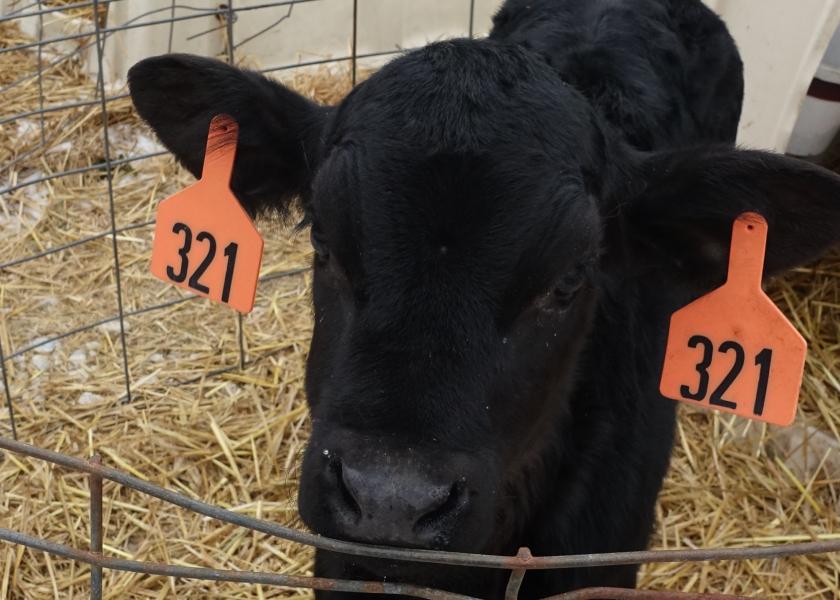Beef-on-Dairy Decisions, Opportunities

Beef-on-dairy breeding continues to grow in popularity in U.S. dairy herds. The trend has been fueled by multiple factors, including low value for dairy bull calves; limited packer interest for dairy fed cattle at this time; large dairy heifer inventories; high costs for raising replacement dairy heifers with comparatively low market values; and more targeted sorting of dairy herds for breeding and genetic advancement strategies.
Will the trend continue? That may depend on how successfully the dairy industry aligns with the desires of the beef industry, according to a pair of University of Wisconsin Extension educators.
Bill Halfman, Monroe County, and Ryan Sterry, St. Croix County, helped manage a survey of dairy producers in Wisconsin, Michigan and Iowa in the fall and winter of 2018. The purpose of the study was to assess how herds utilize beef genetics on dairy cattle, including how they determine whether to breed individual animals to beef or dairy sires, along with their beef sire-selection criteria.
A total of 69 herd managers from Wisconsin (47), Michigan (15) and Iowa (7) responded to the survey. Dairies of various sizes who were likely to be using beef genetics were recruited. Of them, 53 were found to be using beef genetics, of which 45 answered the majority of survey questions.
In selecting dams for beef crossbreds, survey results included:
- Herds were more likely to be using beef genetics to breed lactating females versus virgin heifers.Only 13% of those using beef genetics were breeding more than 10% of their heifers to beef sires, while 80% of respondents were using beef genetics on more than 10% of their lactating cows.
- Heifer inventories largely dictated what portion of the herd would receive beef semen. More than 80% of respondents cited dairy replacement inventories as one of the primary drivers of beef breeding decisions.
- Failure to conceive to dairy semen was the top criteria in choosing to breed to beef semen.Choosing beef semen as a back-up for repeat breeders was listed as at least one criteria for 80% of respondents, and the top criteria for 38% of respondents.
Regarding beef sire selection, the survey showed:
- Black Angus was the overwhelmingly favorite beef breed.More than 60% of respondents said they used Black Angus sires, followed by Lim-Flex (12%); Limousin (11%); SimAngus (7%); Simmental (6%); and other (2%).
- Semen cost was identified most often as a high priority in beef sire selection.More than half (51%) of respondents noted semen cost as at least one key criteria for the beef sires they chose, followed by conception rate (49%); calving ease (44%); solid black hair coat (24%); and having the decision made for them by a mating service (24%). Traits for marbling, ribeye area and frame score were far behind.
In a follow-up report, Amanda Cauffman, Grant County, and Sterry noted a disconnect between dairy producers’ criteria for selecting beef sires, and priorities of the beef feeder segment receiving the calves. In contrast to dairy breeders’ selection criteria for beef sires, the feedlot segment prioritizes carcass value; carcass weight; feed efficiency; ribeye area; muscling; moderate frame score (Holsteins); increased carcass weight (Jerseys); and using homozygous polled bulls.
“Some traits important to the dairy do not add value in the feedlot or to the carcass,” the authors stated. They would like to encourage dairy producers to consider traits that will result in more desirable beef animals in addition to the traits that are important to the dairy, instead of just black calves that may not perform uniformly. For example, Holsteins tend to marble well, but have small, elongated ribeyes and undesirably large frames if rations are improperly managed. Selecting beef sires based on ribeye EPDs, carcass weight and frame size could help improve areas in which dairy fed cattle tend to fall short, thus creating more consistent, desirable beef animals.
Cauffman and Sterry also suggested that within-breed sire selection is important. “Limousin, Angus and Simmental all have homozygous black, polled bulls that can provide needed muscle shape and moderate frame size to add value to crossbred calves. Within-breed selection is highly important, regardless of the breed you choose,” they said.
Marketing also could be more strategic, as more than 70% of the survey respondents sold their beef-dairy cross calves at a week old or less, with more than half of those animals marketed through sale barns. The Wisconsin educators noted that some feedlots offer contracts or purchase programs for crossbred calves, if you use the genetics they select or provide, and follow specific health protocols. These arrangements can result in a win-win for both dairy and beef producers.
Finally, the authors advised against retaining dairy-beef crossbreds as female brood cows for beef production. While the prospect of higher milk production is attractive, they said some dairy traits can persist for generations and might negatively affect feeder calf quality.







